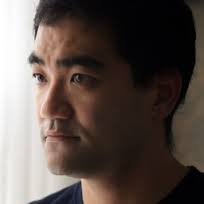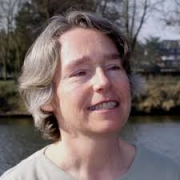The latest CD from the Minabel label offers an enchanting sonic odyssey through the musical landscapes of Dai Fujikura
 The forthcoming disc from Osaka-born, London-resident, Dai Fujikura, sees the composer’s constant hunger for musical expression take form in a range of compositions, from large-scale orchestral works to chamber music and pieces for solo instruments. Yet, as always, each piece offers the composer’s own distinct perspective on the forces for whom the piece is written, in his exploration of new expressive possibilities and extended techniques
The forthcoming disc from Osaka-born, London-resident, Dai Fujikura, sees the composer’s constant hunger for musical expression take form in a range of compositions, from large-scale orchestral works to chamber music and pieces for solo instruments. Yet, as always, each piece offers the composer’s own distinct perspective on the forces for whom the piece is written, in his exploration of new expressive possibilities and extended techniques
The opening work is a case in point. Ampere is not traditional concerto, in which soloist is pitted against the orchestra; rather, the piano is the catalyst, evoking responses from the orchestra that reflect the various hues and textures the pianist draws from the instrument, extrapolated into a series of orchestral colours. Ultimately, though, the piano falls victim to the sympathetic responses it evinces from the orchestra, and amidst a breathless sea of fluttering pizzicato strings, is transformed from sonorous grand piano into a toy piano, whose exotic utterances are now limited in colour and scope; no longer able to provoke a range of replies from the orchestra, the toy piano falls silent, and the piece comes to a conclusion.
The shimmering orchestral textures of Stream State see the surface of the orchestra scintillating with shifting layers of material, pitching differing orchestral textures against one another in a constant state of change. Far from the homogenous, blended sound of a traditional symphony orchestra, the sound here is always in flux. A more sedate second section attempts to impose some semblance of unity across different families; low, restless brass, pizzicato strings, brittle percussion. The rest of the orchestra rises in revolt; sustained woodwind chords try to impart a centre, soon shouted down by a defiant tutti chord. Wisps of material dart elusively through the strings, to be answered by clattering percussion. Rasping brass drives a fomenting orchestra to a frenzy, before a strangely calm conclusion.
Balancing the larger-scale works are three pieces for solo instruments. The balletic grace of Fluid Calligraphy is painted in ethereal arabesques in an exploration of the full range of harmonics on a solo violin. In Poyopoyo, the solo French horn almost attains the state of being able to speak, in the fluttering, muted survey of its articulatory possibilities. For anyone familiar with the talking trombone of the teacher in those Charlie Brown cartoons from the seventies, this is a more refined, introspective version – the schoolteacher caught alone, in a reflective soliloquy. There’s mischief here too, though, with laughter often bubbling to the surface. The natural state of the horn’s soundworld is refashioned, like plasticine, handled like something ‘soft and squidgy’ (as the title translates) and moulded into something much more articulate. The solo instrument really is speaking its own language, if only we could just catch the words – the piece is beautifully executed with superb control in this recording by Nobuaki Fukukawa. Perla is a slow, often sensuous exploration of the expressive power of the bass recorder, employing flutter-tonguing and overblowing techniques as the instrument lurks lonely beneath the moonlight.
The gentle, diaphanous opening of the final piece on the disc, my butterflies, evokes an iridescent heat-haze; the texture gradually opens out, embracing muted brass chords, building to the first sustained vertical sonorities and a moment of release. Fujikura demonstrates (as elsewhere on this disc) his extraordinary ear for texture, for instrumentation that works to enhance as well as to draw out distinct differences between families of instruments. An oboe and bassoon melody moves in slow, measured steps, underpinned by a sustained chord in the distance, leading to a sedate and serenely noble conclusion, reminiscent of Stravinsky. Of all the pieces on the disc, this is perhaps the most lyrical, the most expressive, permeated throughout by a hushed expectation – a reflection in part, maybe, of the initial inspiration for the work, Fujikura’s wife in the early stages of pregnancy.

Dai Fujikura
Coming away from the disc, you are left with a sense that your ears have been opened to the experience of sound anew; Fujikura’s music, in its tightly-controlled expressive means allied with a wonderfully articulate textural language, opens the doors to sound in a manner which makes you listen with a renewed inquisitive sense. For all its surface-level industry and constant exploration of textural possibilities afforded by the instrument(s) for which the composer is writing, there emerges an overall unity of vision, a singular concept from Fujikura’s music; that of being enchanted by sound, of being enthralled by the sonic landscapes through which the music moves.
Fujikura has previously written for the Okeanos Ensemble; his Okeanos Breeze, which was commissioned by the group, embraces traditional Japanese instruments as part of the ensemble. The works on this new disc show his handling of instrumental forces continuing to broaden and mature, in his continuing investigation into new aural possibilities
Ampere is released on the Minabel label next month.

 ‘Yes; it’s very much a Western concerto. Notation is the key; it’s difficult to find sitar-players who are familiar with traditional musical notation, as of course Indian music is an oral tradition.’
‘Yes; it’s very much a Western concerto. Notation is the key; it’s difficult to find sitar-players who are familiar with traditional musical notation, as of course Indian music is an oral tradition.’ Lots of things! The opportunity of working with Okeanos again, and the chance to discover writing for koto and sho. The poems – I loved them, and their relationship with the woodblock prints. I already knew Hiroshige’s work, so it was great to embark on a project that would showcase it. The chance to write a music theatre piece, which combined visual and aural elements equally. Whereas in opera, everything is structured through the singing voice, in music theatre it is a case of weaving together diverse strands. But in both opera and music theatre, it is the overall pacing that is crucial.
Lots of things! The opportunity of working with Okeanos again, and the chance to discover writing for koto and sho. The poems – I loved them, and their relationship with the woodblock prints. I already knew Hiroshige’s work, so it was great to embark on a project that would showcase it. The chance to write a music theatre piece, which combined visual and aural elements equally. Whereas in opera, everything is structured through the singing voice, in music theatre it is a case of weaving together diverse strands. But in both opera and music theatre, it is the overall pacing that is crucial.

 The event is on Sunday 6 July at the Parabola Arts Centre, starting at 4.30pm.
The event is on Sunday 6 July at the Parabola Arts Centre, starting at 4.30pm.
 As part of this global celebration, here at Tokaido Road we are delighted to be championing an innovative, cross-disciplinary creative project that is predominantly female-led.
As part of this global celebration, here at Tokaido Road we are delighted to be championing an innovative, cross-disciplinary creative project that is predominantly female-led.




